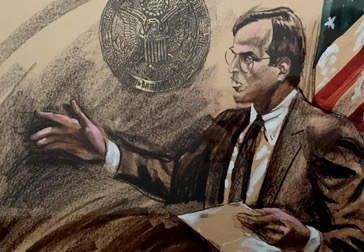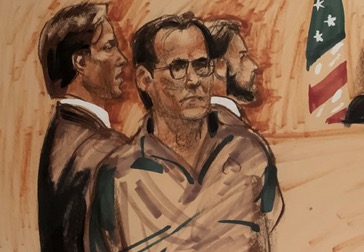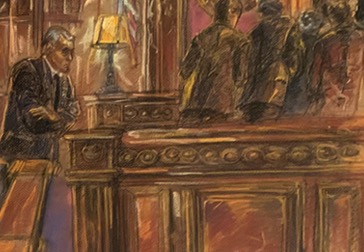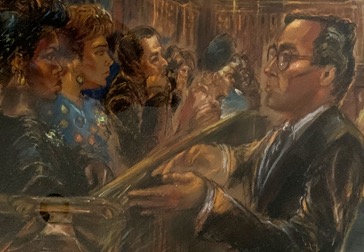Federal Sentencing Reform
Criminal justice reformers just secured a major victory: a bill that could pass the Senate
The Sentencing Reform and Corrections Act, explained.
Updated by Dara Lind on October 1, 2015
http://www.vox.com/2015/10/1/9432017/sentencing-reform-corrections-act
On Thursday, a group of senators introduced a bill they called “the biggest criminal justice reform in a generation” — an effort that, unlike other bills, actually has a shot at moving through the chamber.
The Sentencing Reform and Corrections Act would reduce sentences of some current federal prisoners, and allow future prisoners to get shorter sentences. It’s not the first bipartisan criminal justice reform bill to be introduced in Congress, but it’s the first one with a clear path to passage in the Senate. That’s thanks to an important ally: Sen. Chuck Grassley (R-IA).
Grassley chairs the Senate Judiciary Committee, and he’s opposed past criminal justice reform bills — which has been enough to keep them from coming up for a vote in the full Senate. But the growing pressure for reform, both from advocates and within his own party, appears to have convinced him that he needed to do something. The Sentencing Reform and Corrections Act, written by Grassley after months of negotiations with colleagues, is the result.
This means the bill isn’t just a compromise between Democrats and Republicans — it’s a compromise between criminal justice reformers and at least one prominent skeptic. But reformers hope Grassley’s support will be enough to ensure that this bill makes it further than previous efforts have — and even ends up on the president’s desk.
The Senate bill wouldn’t eliminate minimum sentences, but it would weaken them
Half of all federal prisoners are drug offenders, and the most common criticism of the federal prison system in particular is that prison sentences for drugs are too long. Many sentences are set by congressionally mandated minimums, which don’t allow judges to take the offender’s circumstances into account.
The Sentencing Reform and Corrections Act is mostly targeted at these long drug sentences. And most of its provisions are designed to be limited to the most sympathetic drug offenders: low-level, nonviolent offenders without a criminal record. Importantly, in some cases, the bill clearly defines who should be included — and reduces punishments for some people who might not automatically count as “nonviolent” but haven’t injured anyone. But in other cases, which “violent” or “serious” criminals are excluded is still up in the air — and could be up to prosecutors to decide.
Chip away at mandatory minimums. Current law sets mandatory minimum sentences based on how much of the drug the offender possessed at the time of arrest, but add “enhancements” for other things. If someone has a gun on him while committing another crime, that adds time — sometimes years — to his sentence. And if you’re a “career criminal” (a phrase that’s defined so vaguely the Supreme Court struck down part of its definition in June), simply possessing a gun is a crime with a 15-year minimum sentence. The Sentencing Reform and Corrections Act would reduce that to 10 years, and would cut down the minimum for multiple offenses of gun possession while trafficking drugs down from 25 years to 15. But it would make the minimums apply in more cases.
The bill would allow judges to waive mandatory minimums entirely for some offenders with prior criminal records. Right now, judges can do so for first-time offenders. The Sentencing Reform and Corrections Act would expand that authority to cases where prisoners face a 10-year prison term for a “low-level” drug offense.
And the existing exceptions for people without serious criminal histories would be expanded. Judges would be able to use it for offenders who have committed more than one minor offense (or, in certain cases, offenders who’d served a longer term for one previous crime that still wasn’t “serious”).
Importantly, a lot of these changes are retroactive. The reductions to minimum sentences, for example, apply to people who are in prison now.
Kill the federal three-strikes law. The 1994 crime bill signed by Bill Clinton (and written largely by current Vice President Joe Biden) created a federal “three-strikes law”: If someone is convicted in federal court of a “serious violent felony” and already has two “serious” offenses on his record, he’s automatically slapped with a mandatory life sentence. (This is especially harsh because there’s no parole for federal prisoners.) Many of the states that enacted three-strikes laws during the 1980s and ’90s have since gotten rid of them; the Sentencing Reform and Corrections Act would let the federal government follow suit, and reduce the sentence to 25 years. Similarly, it would reduce the 20-year minimum sentence for a second offense to 15 years. And it would define exactly which prior offenses are supposed to count in triggering those minimums.
Create new mandatory minimum sentences for domestic violence and “export control.” Reports have predicted for months that any bill Grassley would sign on to would have to include new mandatory minimums as well as getting rid of some old ones. The Sentencing Reform and Corrections Act would include new mandatory minimums for interstate domestic violence (since domestic violence is typically a state crime) and for “certain export control offenses.” (The latter isn’t defined in publicly-available materials yet, but it’s rumored to mean selling weapons or defense materials to certain countries or terrorist groups). Neither of these are terribly common crimes, especially compared with drug convictions, but it’s still a reminder that Congress isn’t convinced that mandatory minimum sentences themselves are bad — just that the crimes that need to be punished have changed.
It’s important to note, though, that just because mandatory minimums have exacerbated racial disparities doesn’t guarantee that this bill would fix them. The reason some liberals supported mandatory minimums to begin with back in the 1970s and early ’80s is that it was supposed to counteract the racial bias of judges, who would give shorter sentences to white offenders. How much that would remain true today if judges were given more discretion just isn’t yet clear.
The bill would allow some current prisoners to shorten their sentences
Allow many federal prisoners to reduce their sentences by participating in programming. The bill includes a version of the Corrections Act, which was introduced earlier this year by Sens. Sheldon Whitehouse (D-RI) and John Cornyn (R-TX). Under Corrections, eligible prisoners would get slotted into risk categories based on how likely they were to commit another crime.
Low- and medium-risk prisoners could get reduced sentences for every month they participated in prison programming (like education or a prison job) and maintained good behavior.
This is another case where it’s hard to tell whether the Sentencing Reform and Corrections Act would mitigate racial disparities or make them worse. The “risk assessment” tool the government would use to classify prisoners for potential time off could end up relying on “static factors” that prisoners can’t change — and that often correlate with race or socioeconomic status. (The original Corrections Act required that the government only look at factors that were within prisoners’ control to change, but no tool like that has been developed yet.)
Reduce the crack/powder sentencing disparity for prisoners sentenced before 2010. Before 2010, someone convicted in federal court of possessing a certain amount of crack cocaine got the same mandatory minimum sentence as someone convicted of possessing 100 times that amount of powder cocaine — despite the fact that they’re the same drug. Because crack cocaine is predominantly used by African Americans and powder is predominantly used by whites, that created a tremendous racial disparity. In 2010, Congress passed a law that reduced the 100-to-1 disparity to 18-to-1 for any future offenders — but didn’t do anything to help the people who’d been sentenced under the old law. The Sentencing Reform and Corrections Act would fix that, and allow the 6,500 or so people in prison for pre-2010 crack sentences to petition for shorter sentences under the new law.
Create a compassionate release program for elderly and dying prisoners. A lot of prisons are struggling to take care of older prisoners — after all, there are more of them than ever before. The Sentencing Reform and Corrections Act would create a way for prisoners who are over a certain age or terminally ill to petition to be released, rather than dying in prison.
Allow some people sentenced to life as juveniles to apply for parole. Right now, no federal prisoner can apply for parole. The Sentencing Reform and Corrections Act would reinstate parole for a very small group of people: people given federal life sentences when they were under 18, who’ve served 20 years of their sentences already.
The bill includes a couple of senators’ pet issues — but not others
While the Sentencing Reform and Corrections Act isn’t exactly a comprehensive bill — there’s nothing in here about policing, for example — it already includes some provisions that particular senators have been working on (and more might be added in markup).
Limit the use of solitary confinement for juveniles. The UN has described solitary confinement as torture, and the frequency with which it’s used in American prisons has come under increasing criticism. The Sentencing Reform and Corrections Act doesn’t address solitary confinement for most prisoners, but does put restrictions on its use for prisoners under 18 — a particular pet issue of Sen. Cory Booker, who launched a campaign to end juvenile solitary confinement earlier this week.
Require the federal government to compile every law that has a criminal penalty. There are a lot of laws and regulations that carry criminal penalties, and the federal government doesn’t have them all in one place. That’s particularly worrisome to business groups and conservatives, who are concerned about the use of criminal penalties for regulatory violations. The Sentencing Reform and Corrections Act would require the federal government to put a list together.
Notably, though, the bill doesn’t include a reform particularly dear to Sen. Orrin Hatch (R-UT) and to some conservative criminal justice reformers: keeping prosecutors from ringing up businesses on violations of obscure regulations by requiring them to show that a defendant intended to violate the law.
The bill doesn’t have much time to pass
Grassley’s support means a lot, to be sure, in terms of moving the bill through Congress. But there’s not much time on the calendar in 2015, and Congress may be uninterested in taking up any major legislation in a presidential election year. Furthermore, Grassley hasn’t even promised that he’ll get the bill to the floor — or that he’ll work to keep it from getting amended to death in committee or on the floor. (It’s easy to imagine, for example, an amendment to add the other bill the Senate Judiciary Committee is considering — which would create a new mandatory minimum for immigration offenses and greatly expand the prison population.)
The House, meanwhile, has been going through its own process. In addition to the SAFE Justice Act, which has the support of some senior Republicans, House Judiciary Chair Bob Goodlatte and ranking member John Conyers are reportedly working on their own bills. Speaker John Boehner promised to bring reform to the floor this year, but he implied it was going to be one of the chamber’s own bills. And since Boehner himself is resigning in a few weeks, what he promised doesn’t matter much anyway.
But the fact that Grassley, a longtime opponent of sentencing reform, is introducing a real bill at all is definitely significant. Criminal justice reform has won support among members of both parties. What it hasn’t been able to do, until now, is show that the issue is so popular that even legislators who aren’t exactly won over to the cause still feel the pressure to do something about the issue. That’s how the bills that accelerated mass incarceration in the 1980s and 1990s got passed. And it’s the only way bills could be passed to reverse them.








